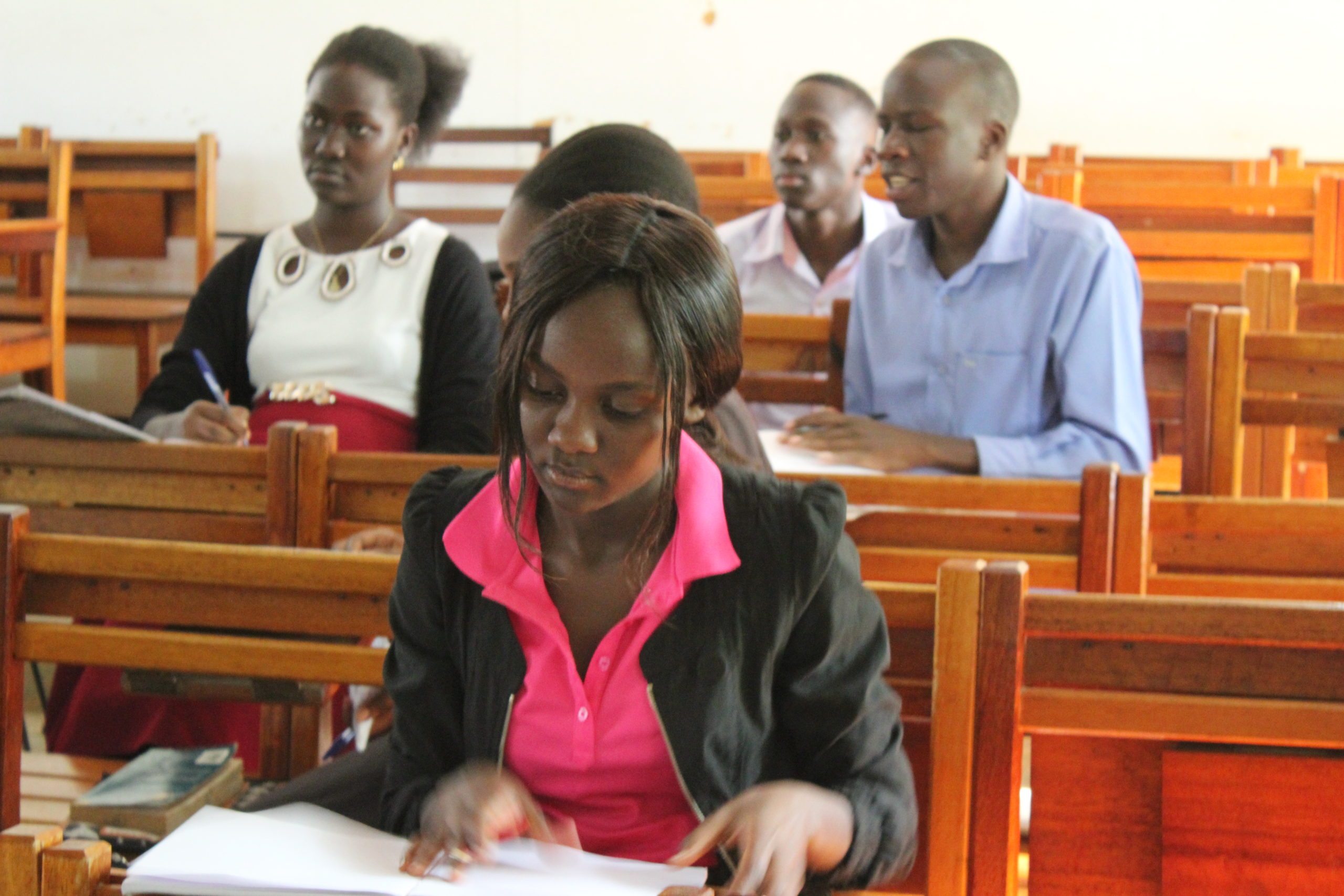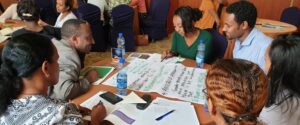
How to make university classes more gender responsive
If changes to higher education are to achieve their objectives fully they need to be inclusive of all students. Mai Skovgaard shares what some university teaching staff in Tanzania and Uganda are doing to make their classes more gender responsive.
The Transforming Employability for Social Change in East Africa (TESCEA) partnership is working to help students in Tanzania and Uganda be better equipped for the roles they might play in employment and wider society after they graduate.
For any changes in university courses, teaching approaches and engagement with wider stakeholders to be effective they must be inclusive for all students. However, through socialisation while growing up, people learn about and develop different expectations, attitudes and behaviours associated with their gender. A 2006 report on gender and higher education in Uganda, Tanzania, Sri Lanka, Nigeria and South Africa found that poor pedagogical practices in higher education reinforce gender inequalities. This can lead to a hidden curriculum in which male students dominate classroom time and space. By contrast, pedagogical practices that are inclusive, interactive and that balance teacher and student input facilitate women’s participation. To ensure, therefore, that the course redesign and transformative learning happening through TESCEA is benefiting all students, we are incorporating gender-responsive pedagogy into these project activities.
As we have written about previously, we recently facilitated an online training-of-trainers – or multipliers – course to support ongoing course redesign. Like with with face-to-face workshops, gender considerations ran through this training. One of my roles in this online training was to help facilitate discussions around gender and we had a dedicated forum for gender discussions. This post shares some of the responses to a question we asked early on in the training: Have you done anything differently to make your class more gender responsive since your first course redesign workshop?
With this question we wanted to explore:
- Whether teaching staff had done anything differently to make their class more gender responsive
- What they had changed
- Why they made this change
- Whether they can see a change in their students as a result.
This question marked the start of an engaged and thoughtful conversation, with some key themes around how educators see gender relating to teaching and learning practices
Teaching and learning materials: Gender-sensitive references
Since participating in course redesign workshops, many educators said they have paid more attention to who authored the materials they use in class and the gender of examples used. However, this is not easy.
“Making a gender sensitive list of references has become an uphill task,” said Simon Esibo of Uganda Martyrs University. “Linked to this, some questions are emerging: is gender a factor in thinking development of students? If so, what are the consequences of exposing students to gender-blind thinking development?”
Docus Alowo of Gulu University, Uganda agreed: “It is really an uphill task to get good reference materials keeping a gender lens and, from my experience, I see a conflict between quality of content and gender. Most of the very good up-to-date reference books for the courses I teach are authored by males so I get torn apart between ensuring quality while considering gender.”
Recognising these challenges, some lecturers are finding ways to teach in a gender-responsive manner while using references that might not be gender sensitive.
Docus Alowo added: “What I have been doing is to use the good up-to-date books but bring in more live examples from females in that particular field to balance the boat and ask students to find the gender gap in a particular concept, discussing possible contributing factors and how we (me and the students) can bridge that gap in learning and even in the possible working environment.”
Tupokigwe Isagah of Mzumbe University in Tanzania takes a similar approach: “I tried to ensure equal gender representation for speakers. This was difficult as most of the videos on YouTube on IT are presented by men. But I tried to mix. My strategy was as follows: I searched on google who are the successful women in IT worldwide. Most of these women had more motivational talks than teaching content. This is why I used to listen to their talks and pick interesting talks or content in the talk that will make my learners think and analyse what they discuss in relation to our context (most of [the speakers] are from developed countries).”
Related to the choice of class materials, some participants noted the need for variety in use of language, making sure that they didn’t only use “he” or only use “she”.
Classroom management and set up: Where people sit and how they interact
Class dynamics was also a key topic of discussion and much of that starts with how students are seated.
Eva Mirembe of Uganda Martyrs University said: “I have paid attention to the way I group my students. We have more males than females in the BSc IT course [but] I have made sure that in each group there is at least one female. I have avoided females sitting alone and away from their male counterparts and I have also been keen on equal participation of both genders in class.”
“The last two semesters, all my students are now equally active and practical.”
“Changing sitting positions meant distorting the hidden agenda for the choices of the seats,” said Christine Oryema of Gulu University, Uganda. “However, having few females in the class made it a little easy for me. I formed groups and made the females leaders, not deputies/vice. I made sure the passive females and males took the front seats where they could easily be involved.”
“I personally changed the place where I normally stood or sat while lecturing and chose to stand by the side or back to give space for students’ activity.”
Veronica Munuve of Uganda Martyrs University takes a similar approach:
“In grouping students I designed responsibilities and assigned each student a role:
Convener – is the person who calls meetings for discussion outside the class.
Chair – is the person who chairs the discussions and is supposed to ensure that everyone is given a chance to contribute.
Secretary/ies – takes notes of the discussions.
The students were happy about it also because I tactfully assigned roles and rotated them. I try to see that there is gender representation since the number of girls to boys are not equal.”
Docus Alowo initially encountered resistance to changing classroom set up but “students have now gotten used that they will not sit in position for two hours or so in my class because I use blended learning activities like think-ink-pair-share, pyramid discussion.”
“They have come to love it and actually one commented ‘madam, you give us a lot of work but at least we don’t sleep off because it is very interactive and we understand right from class’.”
Setting an example
Agrace Atwikirize of Uganda Martyrs University also described how this can positively influence others:
“I witnessed a student teacher reorganising the sitting arrangement during school practice after he realised that girls were seated on one side and boys on the other. And to me, that is positive change in the way the students approach the issue of gender-responsive pedagogy.”
Grace Msoffe of University of Dodoma, Tanzania has observed similar: “I do not accept any group with one gender. My students know that very well, and we have agreed this to be our standard in the course sessions I am facilitating.”
Classroom interaction: Who participates in class
Beyond seating, gender dynamics can be influenced by how the class is facilitated.
Felichesmi Lyakurwa of Mzumbe University, Tanzania said: “As I ask questions, in most cases you will find only male students respond and are ready to share what they think about that concept. So I usually engage female students by naming them i.e., ‘Diana do you agree with what James said about role of stakeholders to the success or failure of community projects?’ And I am carefully reading from their faces; the one seems to agree or disagree about what she responded I quickly throw a follow up question to her. In this case, the entire class becomes involved in my class and enjoys learning.”
Flora Fabian of University of Dodoma said: “In organising groups in class I make sure that although girls are only about 30% in my class, they are evenly distributed in groups, and during group presentation I make sure a boy and a girl presents. Fortunately, my course has a lot of different characteristics between male and female but I go further to ask the students whether they can differentiate biological differences and social differences and whether the social differences are automatic and unconsciously constructed.”
And this approach makes a difference, she added:
“Girls have become more confident in class and when I pose questions, they have now been volunteering to respond and boys appreciate them as equal learning partners. As always I make sure to use gender responsive language and respect the students as learners.”
Edward Mwamkula of Mzumbe University noted that such approaches do not just benefit women but ensure more equity in participation for all of the quieter students. “My class had some learners who couldn’t easily interact with another gender. Both females and males had this kind of learners, however female were most affected. I made efforts to make them interact in discussion and leading of the discussions. The strategy showed improvement; the introspective learners become active and can interact with both genders. Pedagogically, the class contributions became gender-inclusive; like giving examples, but also when referring to the status of gender in the jobs and other responsibilities. Learners pay attention to contributors irrespective of gender. The most interesting is the growth of confidence when contributing. Hopeful this can help learners in not only the learning environment but in their job and back to families.”
Unlocking potential
It is very encouraging to see that our efforts to work with faculty to think through gender as it relates to their courses is starting to show results in their teaching and learning practice. It is also very encouraging to hear how the lecturers are seeing this reflected in a change of behaviour among their students as well.
As Edwin Ngowi of University of Dodoma summed up:
“I normally apply gender equity principles in the learning process by providing fair learning opportunities for both males and females. This kind of learning environment encourage both male and female learners to bring out their full learning potentials in all my subjects I facilitate. I am proud to have been trained within the TESCEA project in skills necessary for gender responsive teaching and learning.”
***
Transforming Employability for Social Change in East Africa (TESCEA) is helping young people in Tanzania and Uganda to use their skills and ideas to tackle social and economic problems. With partners in Tanzania, Uganda and Kenya, TESCEA supports universities, industries, communities and government to work together to create an improved learning experience for students – both women and men. This improved learning experience fosters the development of critical thinking and problem-solving skills, and allows for practical learning beyond the classroom that improves a graduate’s employability.
The TESCEA partnership is led by INASP (UK), working with Mzumbe University (Tanzania), University of Dodoma (Tanzania), Gulu University (Uganda), Uganda Martyrs University (Uganda), Association for Faculty Enrichment in Learning and Teaching (Kenya) and Ashoka East Africa (Kenya).
TESCEA is funded by the UK’s Foreign, Commonwealth & Development Office (FCDO) as part of its SPHEIR (Strategic Partnerships for Higher Education Innovation and Reform) programme to support higher education transformation in focus countries in Sub-Saharan Africa, Asia and the Middle East.
To learn more about TESCEA, click here. To learn more about INASP’s Gender Responsive Pedagogy in Higher Education Framework, click here.

 Previous Post
Previous Post Next Post
Next Post


